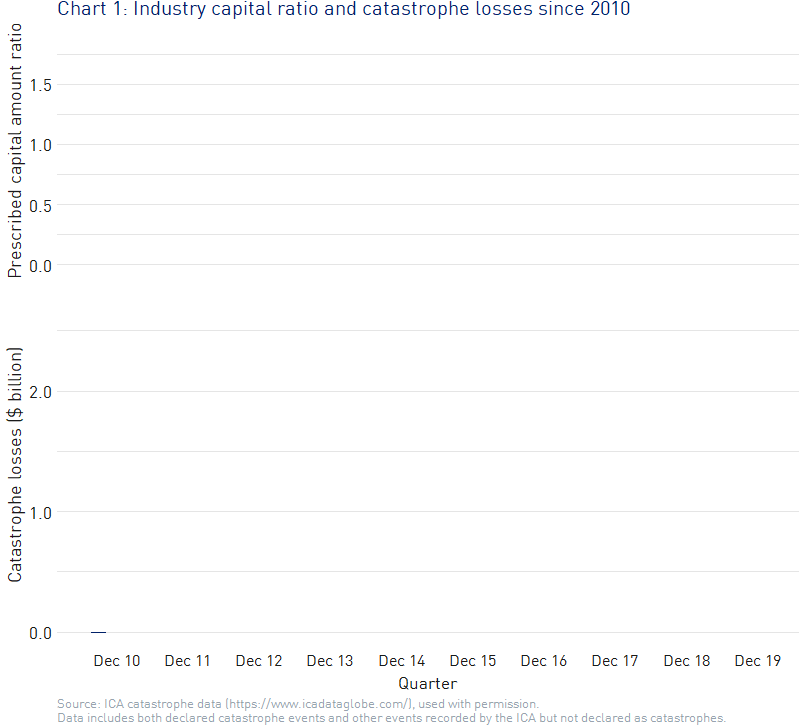Data find: Capital resilience in Australia’s General Insurance industry
When it comes to supervising the general insurance (GI) sector, APRA’s primary responsibility is to make sure that insurers have the financial means to pay all legitimate claims to their policyholders under all reasonable circumstances. One of the ways APRA does this is by requiring general insurers to hold minimum levels of capital, which provides them with a measure of financial resilience to withstand heavy or unexpected losses.
The biggest test of that resilience for general insurers often comes in the aftermath of a major natural disaster, such as this summer’s bushfires, floods and hailstorms.
The relationship between major catastrophe events and capital resilience is shown below.

Chart 1 shows the Insurance Council of Australia’s declared catastrophe losses from September 2010 until the end of last year, which includes events such as Brisbane’s flooding and Cyclone Yasi in Q1 2011, Cyclone Debbie in Q1 2017, NSW hailstorm in Q4 2018, and the latest estimate for the NSW, QLD, SA and Victorian bushfires which took place between November 2019 and February 2020.
Plotted above it in the smaller chart is what is known as the prescribed capital amount ratio for GIs, which is a measure of how much capital the industry is actually holding in aggregate compared to the minimum level of capital that APRA requires it to hold1.
The GI industry’s capital resilience is indicated in these charts by comparing the ratio and declared losses over this time period. As can be seen, the prescribed capital amount ratio typically drops in the immediate aftermath of a catastrophe before gradually building back up again in more benign years.
Reinsurance has played a key part in the GI industry’s capital resilience over the past 10 years and will continue to do so. With reinsurance ultimately sourced from foreign reinsurers, APRA's supervisory focus has involved an increased level of engagement with both the parent entities, or overseas reinsurance groups, and home regulators of these groups.
More information about APRA’s supervisory activity in GI2 and other industries is available in APRA's Supervision Priorities publication.
Footnotes:
1 For a more in-depth description of capital, see our 'Capital Explained' article, March 2020
2APRA's Supervision Priorities - PDF 686.19KB, Chapter 4, section 4.1.1 Overseas reinsurance, January 2020.
The Australian Prudential Regulation Authority (APRA) is the prudential regulator of the financial services industry. It oversees banks, mutuals, general insurance and reinsurance companies, life insurance, private health insurers, friendly societies, and most members of the superannuation industry. APRA currently supervises institutions holding around $9 trillion in assets for Australian depositors, policyholders and superannuation fund members.